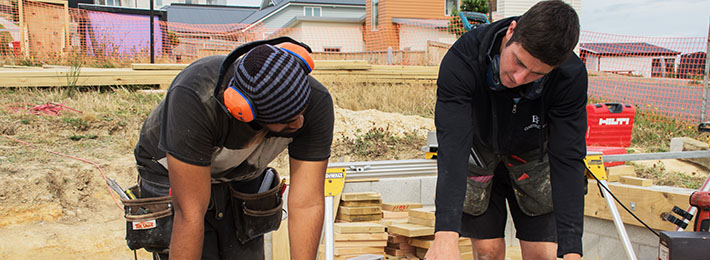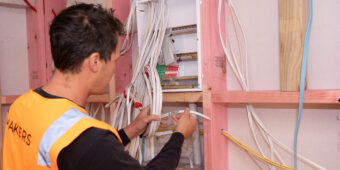Right tools for the talk
14 Apr 2016, Featured, Prove Your Know How

Follow the tips below to help ensure your toolbox talks are doing the job
When it comes to working on site, having everyone on the same page not only improves workflow, it also helps create a safer environment for all involved. Toolbox/pre-start meetings, held on site with your team, offer workers the opportunity to have their say about health and safety, the work programme, and how the job is tracking.
Don’t think that rounding up the team for a talk is a waste of time – it’s an investment with a number of benefits.
You should run them on a regular basis for 10-15 minutes. Weekly or fortnightly is often suitable; however, if you’re involved in a big project with new workers coming on site regularly, then you might want to increase the frequency to daily.
Here is a guide on how to run a toolbox meeting:
1.Schedule the meeting
Let the team know when and where the meeting is. The start of the day generally works best.
2.Set the scene for the meeting — keep it real and be positive
Encourage everyone to join in and contribute their own knowledge and experiences, and get their feedback at the end. Use simple language that everyone can understand to convey the key health and safety messages.
Toolbox meetings are an opportunity to provide positive feedback for safe actions, hard work and initiative. It’s also important to avoid criticism and acknowledge everyone for their contributions. The meeting shouldn’t be a lecture, but a chance for engagement with the team.
Ensure that running and attending toolbox safety meetings is recognised as an important part of a person’s role. If workers regard health and safety as an add-on, it will often be neglected.
3.Follow an agenda
Follow an agenda to make sure you cover everything off. See the sample agenda below for ideas:
– Inform workers of changes to company procedures.
– Identify new hazards and review existing hazards.
– Develop/review risks and hazards.
– Discuss/review accident and incident data, including near misses.
– Discuss the work programme for the day/week ahead.
– Have company leaders talk about the business direction or a particular topic.
– Discuss any new equipment on site.
– Provide a short training session (Site Safe provides exclusive toolbox talk topics to its members for upskilling and informing workers).
4.Close the meeting
Thank the team for their time and let them get to work.
5.Record meeting notes
Details of meetings should be recorded and kept on file. Record meeting dates, attendees and discussion items. Show follow-up items from previous hazards, accidents and incidents. Site Safe has a free downloadable toolbox-meeting template that can be found at www.sitesafe.org.nz.
Register to earn LBP Points Sign in



